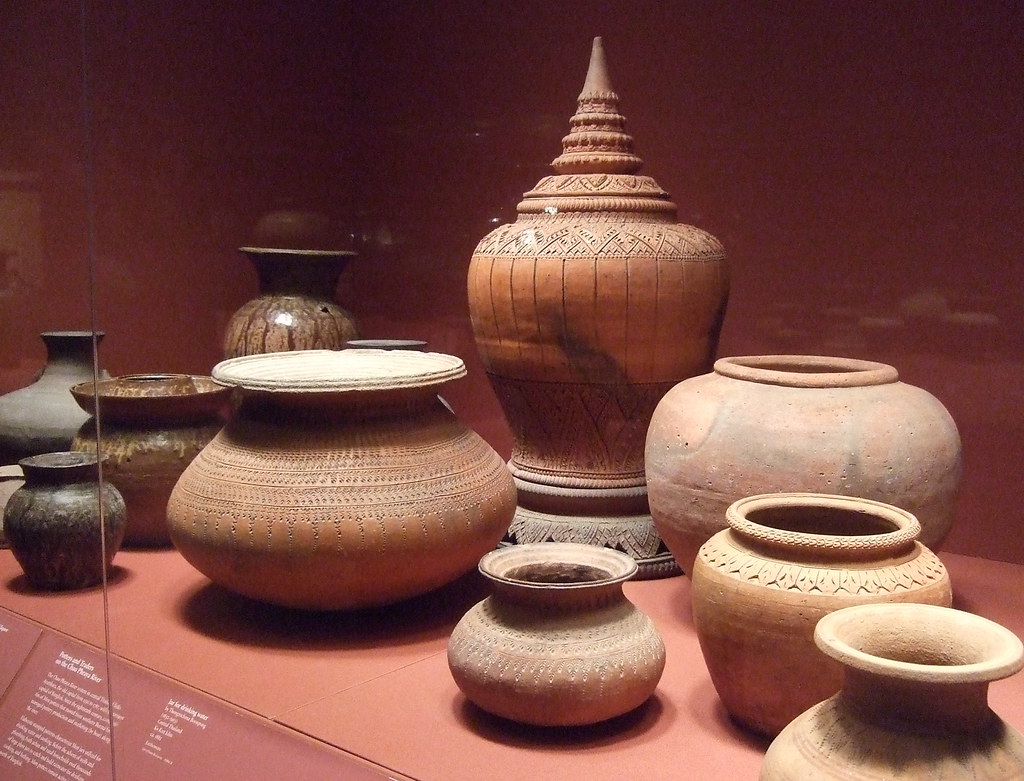Have you ever marveled at the beauty of Asian pottery? It’s not just art; each piece holds a story, a glimpse into the rich culture and history of Asia.
This article will unveil the mystery behind different styles of Asian pottery and their cultural significance. Dive in, and you’ll gain a newfound appreciation for this remarkable art form. Your understanding of Asian traditions will deepen as you explore the aesthetics of Asian pottery.
Prepare to be fascinated!
Table of Contents
Chinese Pottery
Chinese pottery is famous for its delicate beauty and historical significance. It’s been a staple of Chinese culture for thousands of years, with the earliest pieces dating back to the Neolithic period. Each one tells a story of the era and the people who made it.
Ceramic work from the Tang Dynasty (618-907) is particularly admired. It is known for its bold, stunning colors like bright yellow, green, and blue.
During the Song Dynasty (960-1279), Chinese pottery took a different turn. The potters preferred more subtle and elegant forms, often featuring simple, monochrome glazes.
The Ming Dynasty (1368-1644) is also well-known for its pottery. The blue-and-white porcelain created during this era is recognized worldwide and continues to inspire artists today.
When exploring the diverse world of pottery, know that Chinese porcelain are an exemplary representation of the country’s artistic and cultural heritage. They showcase both intricate craftsmanship and cultural symbolism.
Japanese Pottery
Japanese pottery has a long past, just like Chinese pottery. It comes from the Jomon period (14,000 BC to 300 BC), which is known for pottery with cord marks. With each new generation, the pottery styles changed, each one representing the cultural influences of that time.
Japan’s pottery took a big step forward during the Momoyama period (1568-1603). It was the start of the famous Raku pottery style, which is known for being hand-shaped and glazed with lead. People loved these pieces, which were usually tea bowls because they were simple and rustic.
During the Edo period (1603-1868), on the other hand, Kutani ware became more complex, bright, and decorative. Artists added detail and glitz to their work by using a wide range of bright colors and overglaze painting methods.
Korean Pottery
Korean pottery has a long past and is a unique mix of simple and useful designs. The oldest pieces we know of are from the Jeulmun Pottery Period, which lasted from 8000 BC to 1500 BC. They have simple, useful patterns. It’s not the fancy details that make Korean pottery beautiful; it’s the simple grace and high quality of the glazes.
During the Goryeo Dynasty (918-1392), celadon pottery was very valuable because of its beautiful forms, inlaid designs, and jade-green glaze. Some of these items were tea bowls or booze bottles. They were made with a lot of skill and an eye for beauty.
During the Joseon Dynasty (1392-1910), white china, or “Baekja,” became popular. In line with Confucian ideas, this pottery style had basic forms and not many decorations to highlight the purity and modesty of the form.
Dive Into the Timeless Elegance of Asian Pottery
Embarking on this journey through Asian pottery has no doubt left you with a keen appreciation for this timeless art form. The craftsmanship, history, and cultural significance of each piece are truly captivating.
Whether it’s the vibrant colors of Chinese porcelain, the rustic beauty of Japanese Raku ware, or the understated elegance of Korean celadon, Asian pottery continues to inspire and fascinate. So, immerse yourself in the world of Asian pottery and their historical signifacance – there’s always more to discover and admire!
Did this article expand your knowledge? If so, don’t forget to visit our blog for further educational material.



